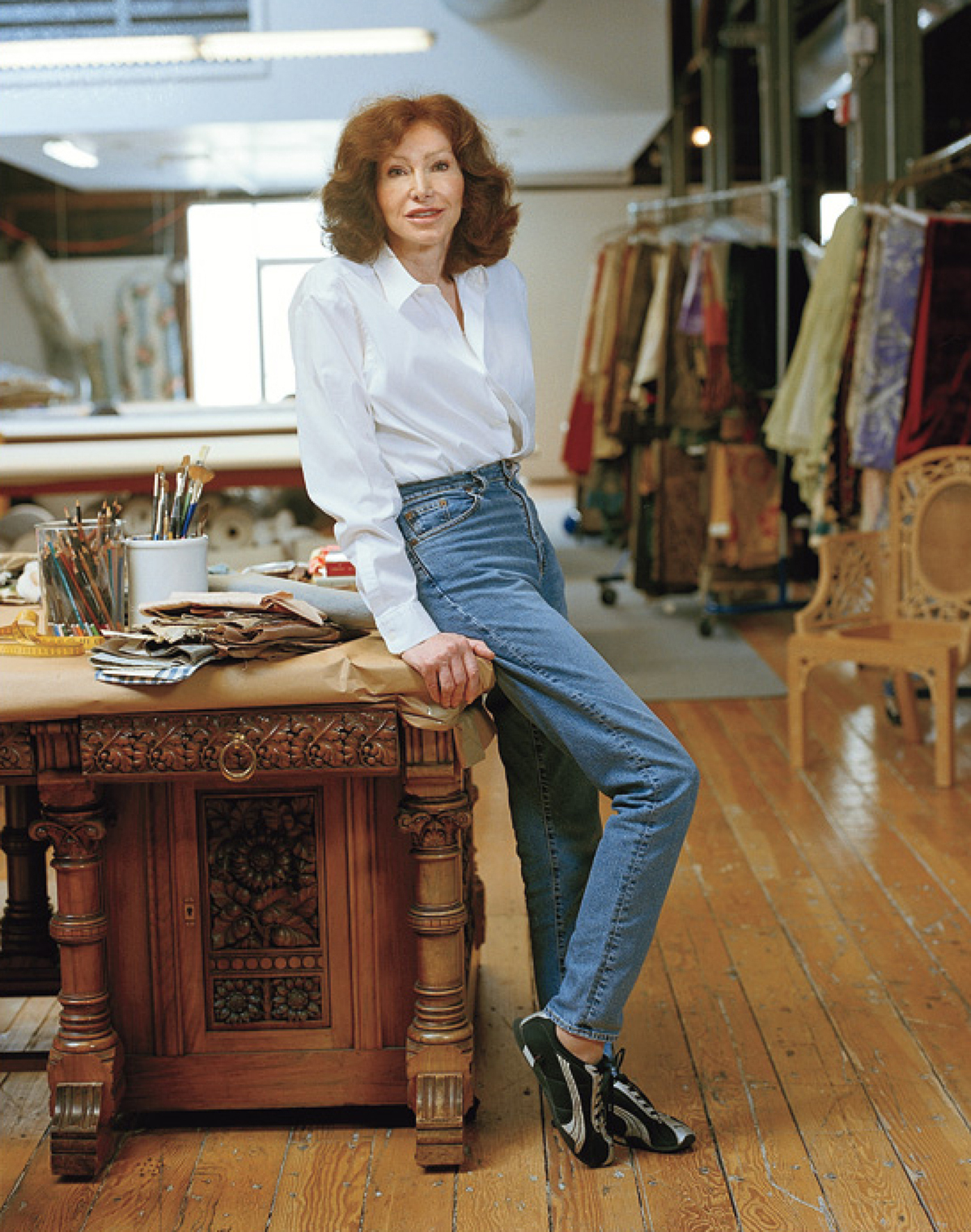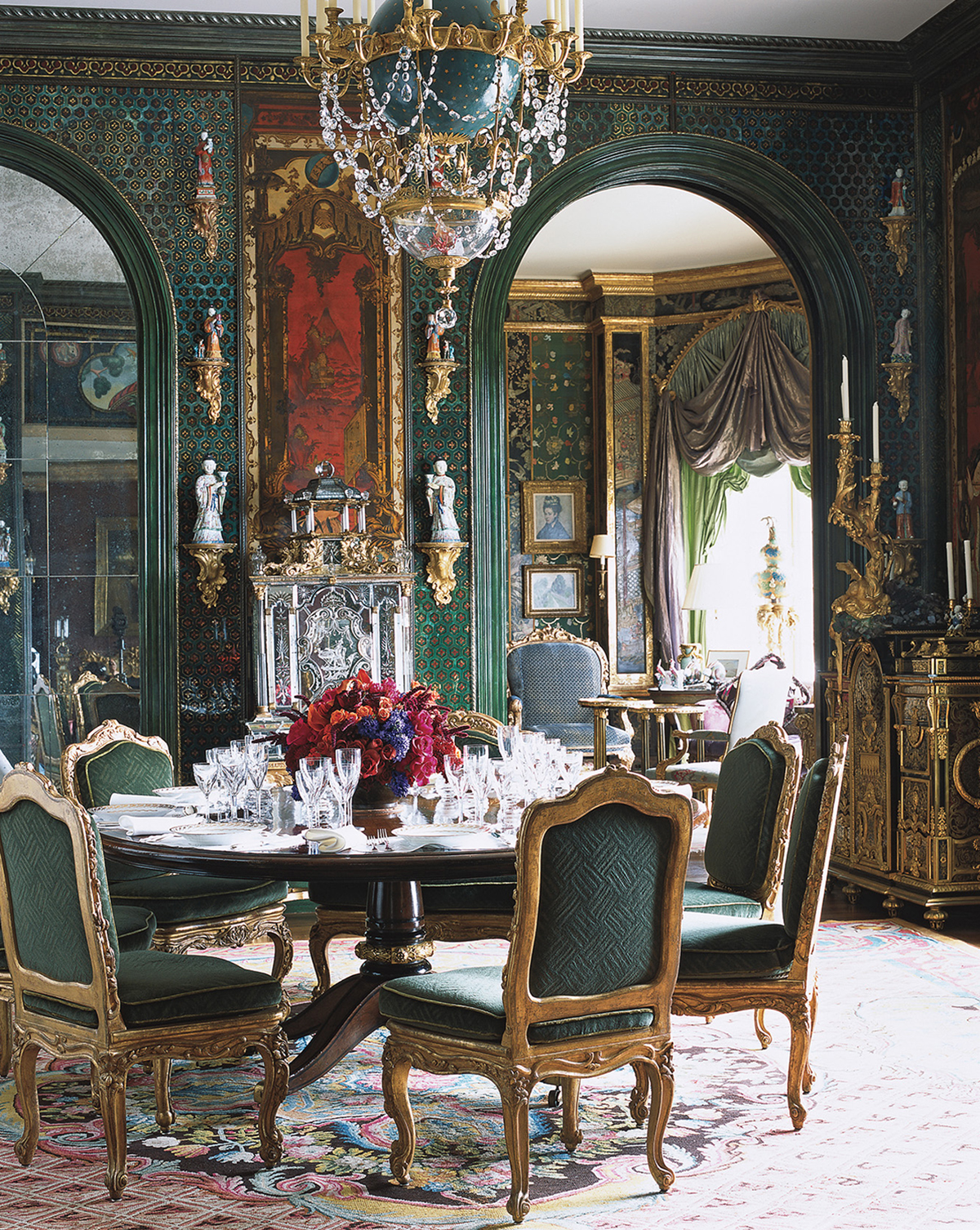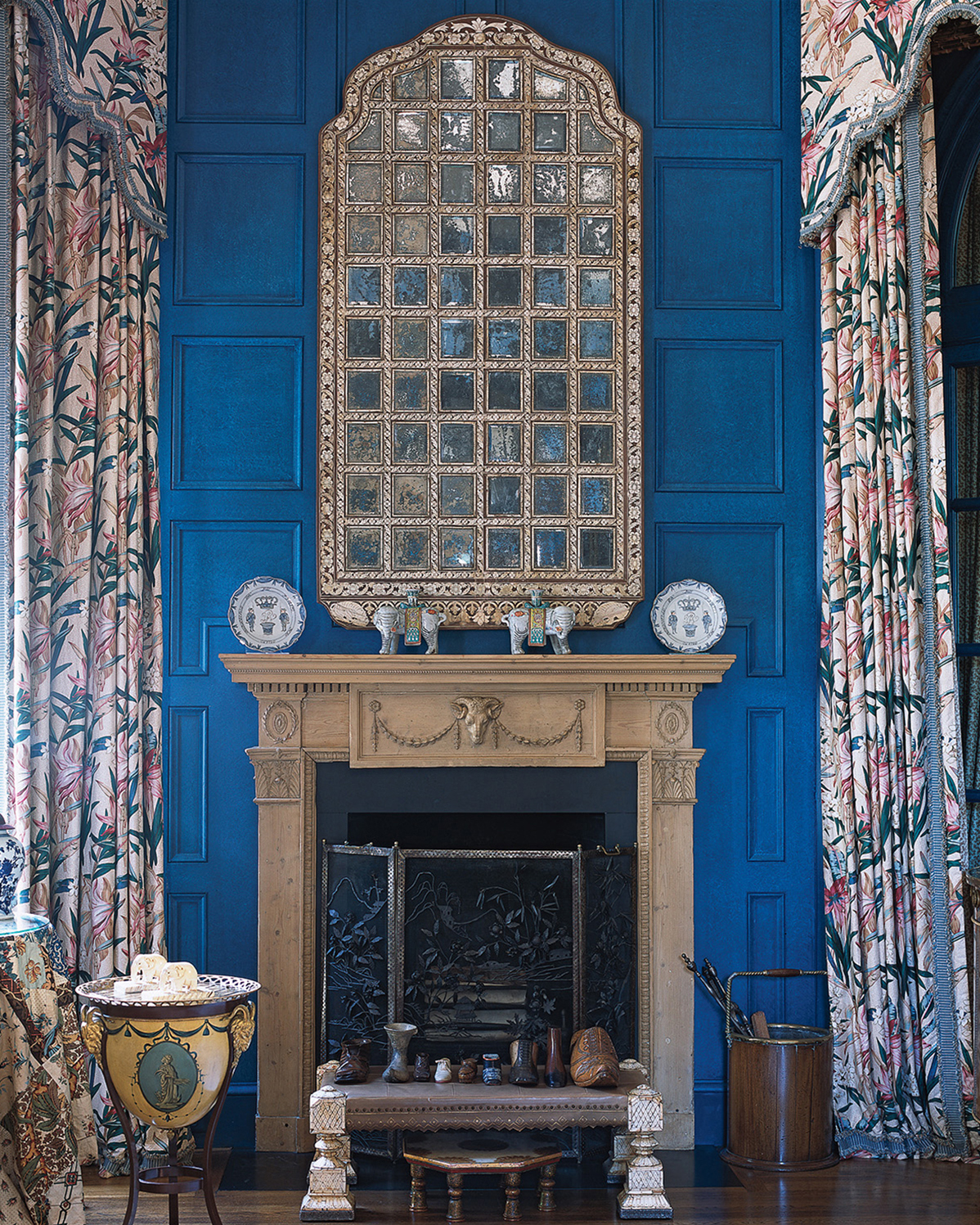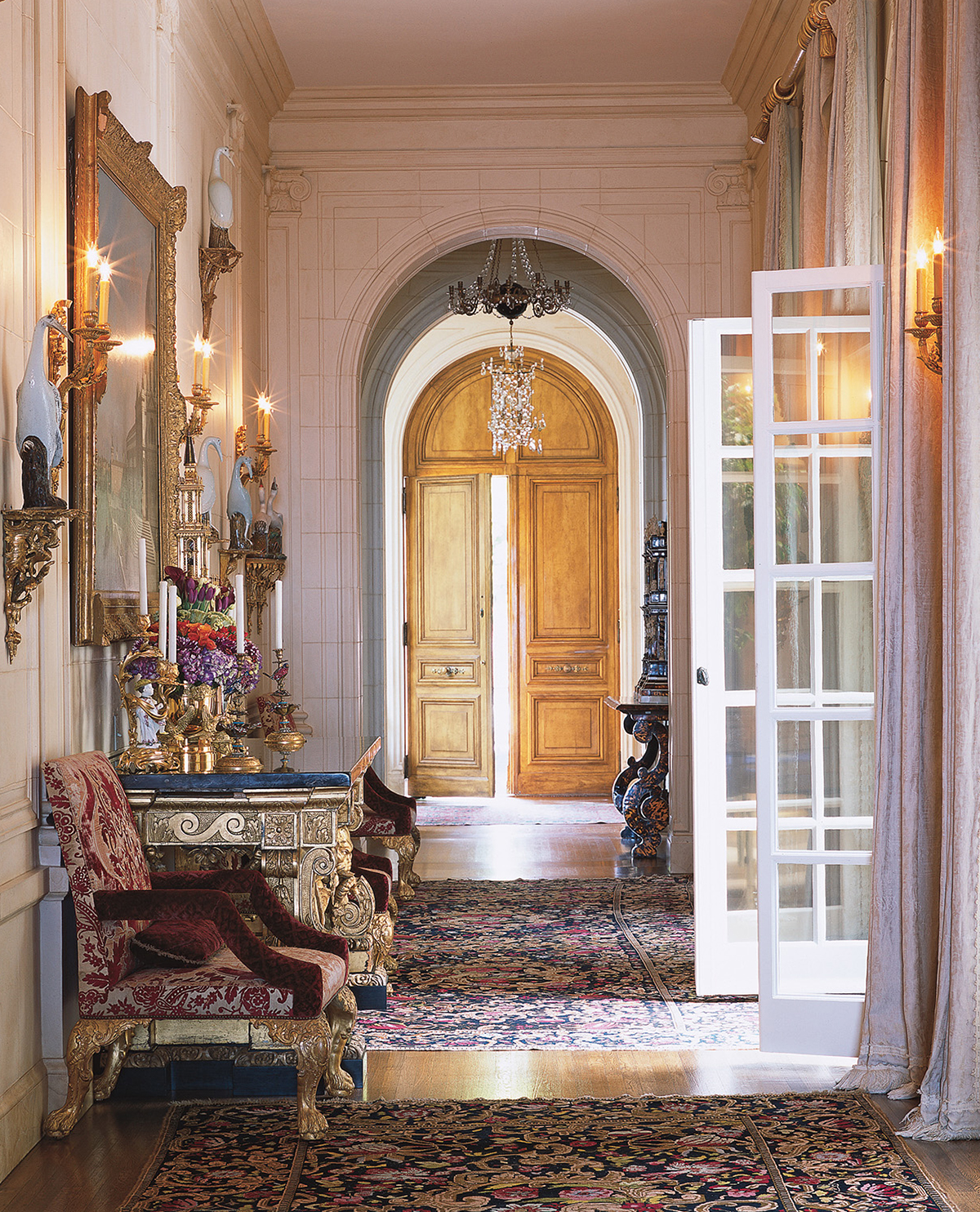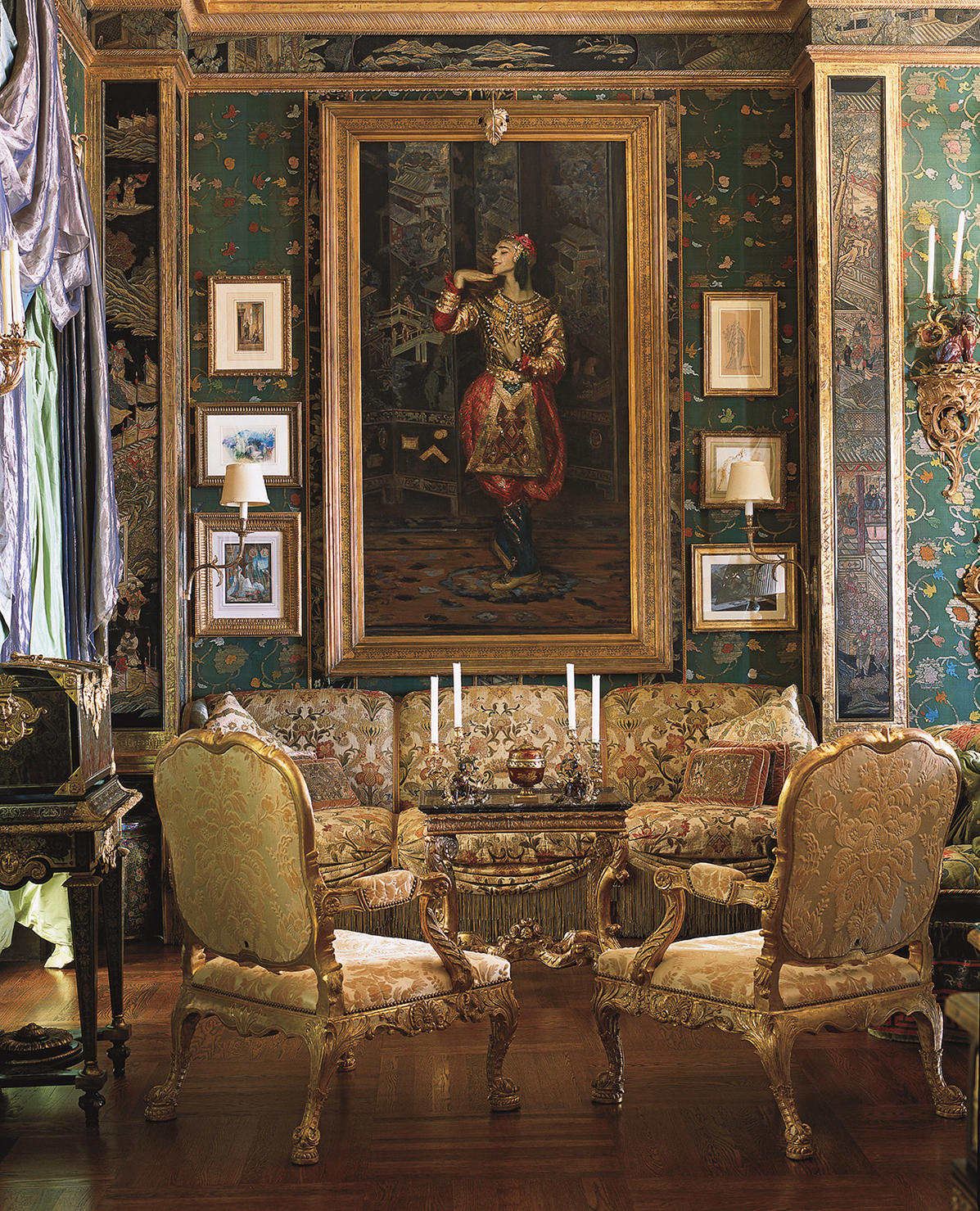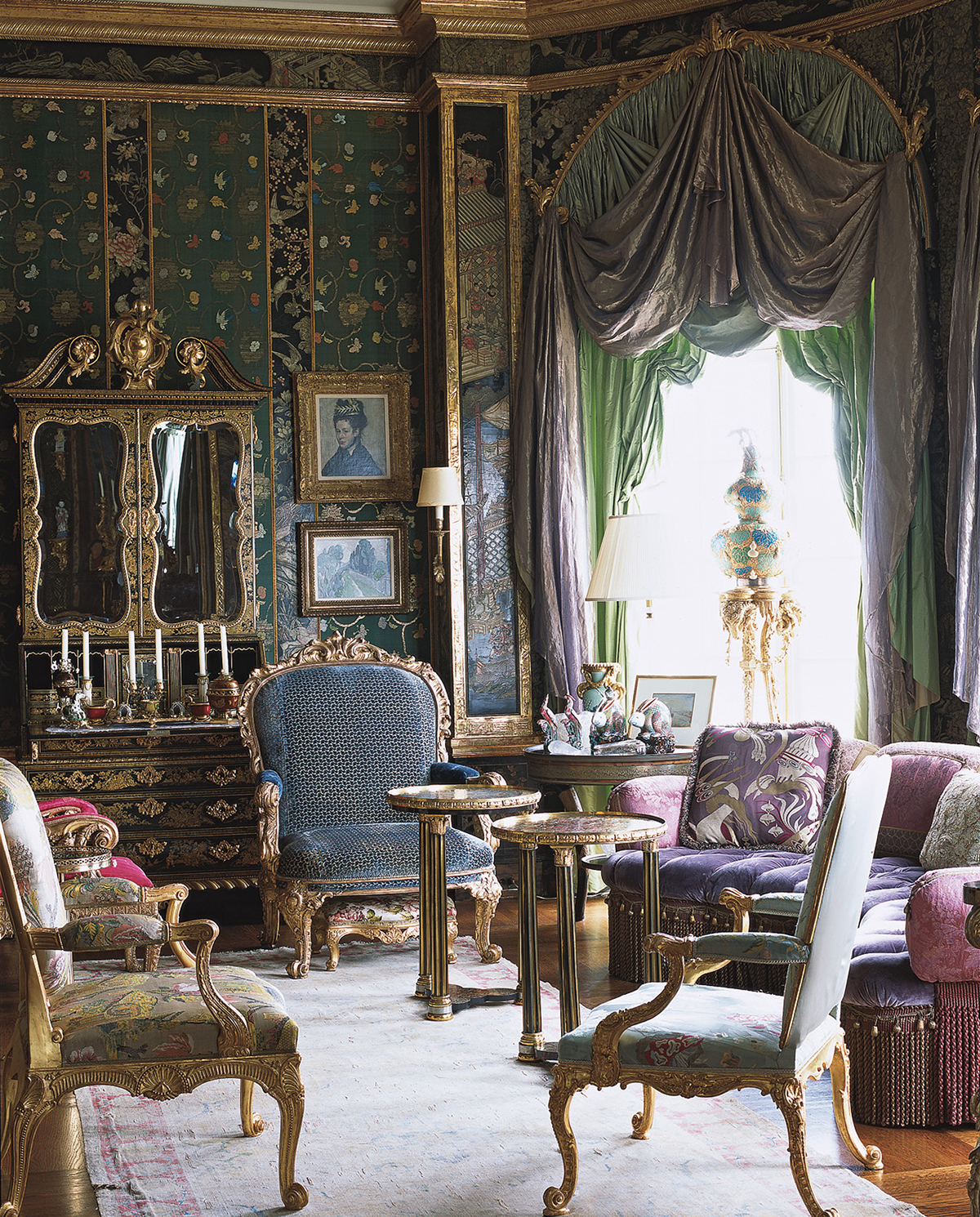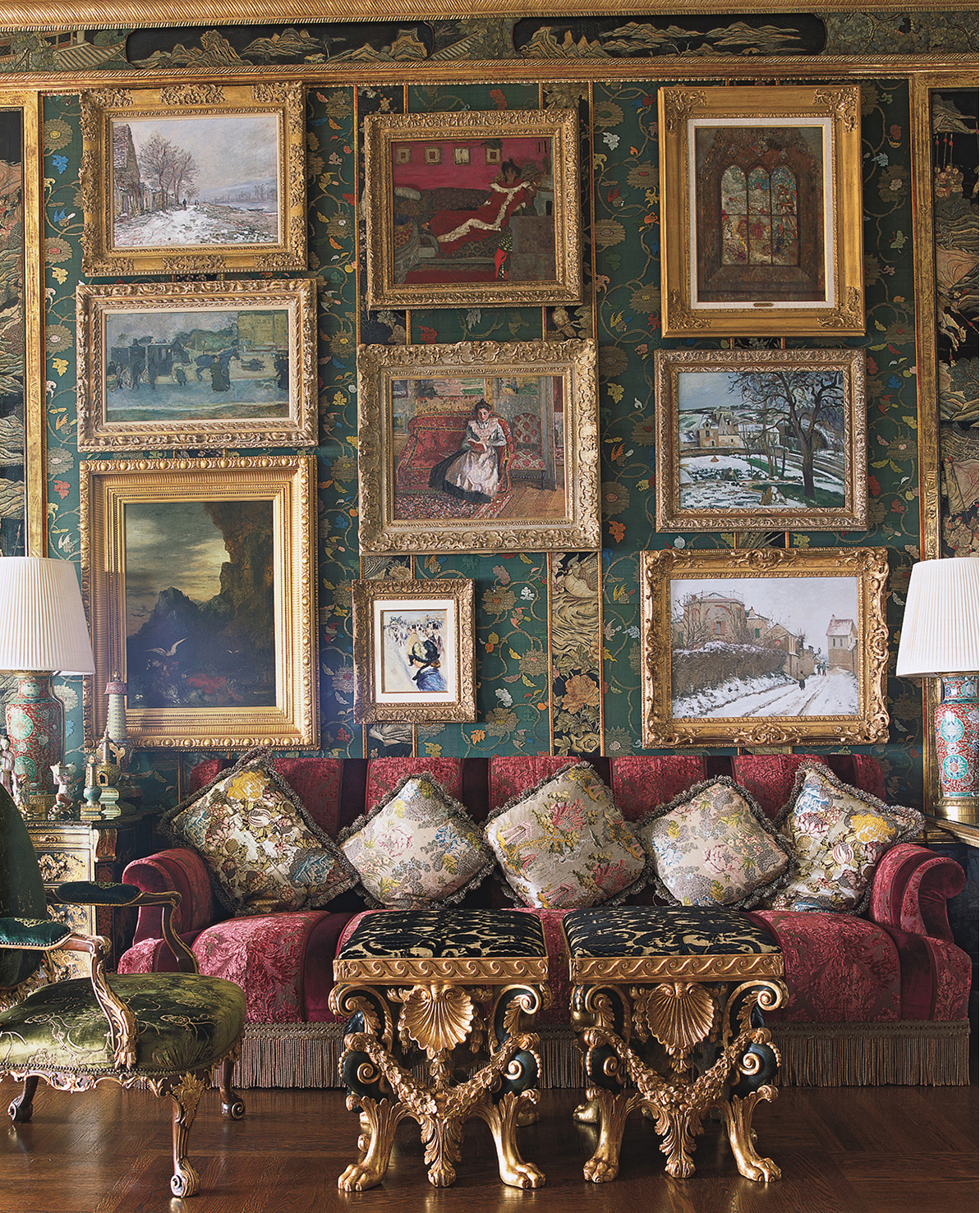The scion of the Californian dynasty passed away this week. Here, we pay tribute by revisiting the 2005 C Magazine story on her Pacific Heights home suffused in Old World splendor
Words by DIANE DORRANS SAEKS
Photography by LISA ROMEREIN
ANN GETTY, wearing Gap, in her Ann Getty and Associates atelier in San Francisco’s Presidio.
Sipping a demitasse in her mirrored dining room with its panoramic view of San Francisco Bay, Ann Getty is surrounded by one-of-a-kind antiques and a stellar art collection that includes romantic Utrillo landscapes, a Monet and sexy Balthus portraits. Yet despite all the splendor around her, it’s the philanthropist-cum-designer’s jam-packed calendar that captures her attention.
Getty, ravishing in a Balenciaga chiffon top and curve-hugging Gap jeans, is leaving for China the following morning on her jet (dubbed “The Jetty” by chums) to put finishing touches on a new high-rise apartment project she designed in Shanghai.
Eight Louis XV chairs by FOLIOT circle the Regency-style dining table.
But before she departs for the Far East, there is a flurry of pressing decisions to be made. While a noted museum director waits to request some of Getty’s rare antiques for an upcoming exhibit, an associate from Getty’s design firm hovers with fabric samples. Meanwhile, her svelte assistant busily schedules client meetings and furniture prototype inspections for the following weeks.
“I’m totally hands-on. I’ve been very practical since I was a girl, growing up driving tractors in the Sierra foothills”
ANN GETTY
SISTER PARISH designed the blue library, which doubles as a bar for parties. Jungle-print curtains rub elbows with a 1680 Indian mirror.
“I have to laugh when I’m described as a socialite,” says Getty as she takes a handful of linen swatches into her hands. “I’m so involved in my work. Nowadays, I go out once a month — barely — to maintain my socialite status.”
Getty, wife of J. Paul Getty Sr.’s fourth son, Gordon, recently moved her design studio into a landmark building in the Presidio that was formerly an army barrack. She’s the first to arrive most mornings at the atelier. There, she works on her new textile collection, plans interiors for her devoted clients and sketches additions to her furniture line, Ann Getty House. Her 40-piece collection, which includes her bestselling hand-carved Venus Chair, is now available through top design showrooms around the country like Shears & Window in San Francisco, Randolph & Hein in Los Angeles and Watkins & Fonthill in New York.
In the gallery where guests are welcomed, the centerpiece beneath a Canaletto painting is a Kentian George II carved giltwood side table with a rare elephant mask crest. The chairs are covered in 16th-century Italian silk velvet.
“I’m totally hands-on,” she notes. “For my living room, I stitched pillows and repaired antique embroideries. I’ve been very practical since I was a girl growing up driving tractors in the Sierra foothills.”
Getty’s roster of clients — young San Francisco families, social-register couples and style-conscious entrepreneurs — is growing, but she is no overnight success. Long before founding her design business, Getty spent three decades studying anthropology, all the while honing her eye for interiors. Having worked on archeological digs in Ethiopia, she credits the demanding work with giving her a fine sense of color and proportion. This intensive practice also helped her learn to visualize decor.
Porcelain Chinese figures stand on sconces in the dining room.
“Designing is a minor art, but such a pretty one. I love to create interiors that please the eye. Beauty can be so uplifting”
ANN GETTY
Getty’s first encounter with the most elite level of decorating came when Albert Hadley and his partner, Sister Parish, decorated her Pacific Heights house when her four sons were young. “I learned many of the finer points of decorating from them as well as from John Stefanidis, who decorated my guest rooms,” says Getty. “I also worked closely with the California firm Leavitt-Weaver.”
Twelve years ago, Ann Getty began a large-scale redecoration of the sprawling and ornate residence, where she now lives with her husband, a music composer by trade. Built in 1906 by architect Willis Polk, it boasts a grand entry hall with art and antiques that would be right at home adorning the halls of the Louvre.
ANN GETTY deftly layered antique handwoven silks and gilded wood moldings with a gold-framed portrait of Nijinsky by Jacques-Emilie Blanche.
At auctions in New York and London, Getty acquired furniture from important English country houses like Badminton House and Ditchley Park. She gathered George II gilded chairs, dramatic beds inlaid with mother-of-pearl and wood, and gilded ormolu objects. Because her family’s revered Los Angeles museum has always collected French antiques, Getty focused on English pieces (mainly because her budget was not big enough to bid against the legendary institution).
“I love the heft and boldness of English antiques,” says Getty, who also devotes time to designing jewelry and fundraising to support art education. In Paris, she scooped up vivid 18th-century silk brocades, which she stitched into delicate pillows. From the estate of dancer Rudolf Nureyev, she acquired plush velvet patchwork textiles, which she fashioned into dramatic stage-worthy curtains.
“This is the ornate look I love for myself, but I don’t impose it on my clients. My work is not all over-the-top design”
ANN GETTY
“This is the ornate look I love for myself, but I don’t impose it on my clients,” she confesses. “My work is not all over-the-top design. For clients, I want rooms that reflect their personal style and taste.”
Swagged Scalamandré silk curtains in the drawing room reflect ANN GETTY’s theatrical touch.
Even amidst the grandeur of Getty’s house, there are quiet corners for an afternoon tête-à-tête overlooking the Palace of Fine Arts. Her gracious rooms, with tufted sofas and chairs covered in plum-colored velvets and golden silks, are at once exotic, dazzling and surprisingly comfortable; party guests typically sprawl on silken sofas as friends curl up to sip Champagne on chairs covered with luscious Venetian hand-woven silk velvets.
Guests are invited to gather on the silk-covered sofa. Among the artists in ANN GETTY’s collection are Camille Pissarro (center) and Gustav Moreau (lower left).
Above all, Getty’s original and opulent eye is evident throughout. A quartet of Canaletto paintings hover above a gilded console table in the music room—quite a theatrical stage for family celebrations. A Sèvres porcelain table commissioned by Napoleon himself stands in a corner. Gilded benches and tables from Spencer House rest next to a silk-upholstered glass chair with the look of a carved crystal goblet.
“Designing is a minor art, but such a pretty one,” muses Getty as she glances across her living room. “I love to create interiors that please the eye. Beauty can be so uplifting.”
Feature image: When ANN GETTY acquired an adjacent house to serve as a guesthouse, she transformed the garden into an exotic poolroom. For parties, the pool is covered with a custom-built dance floor.
This story originally appeared in the September 2005 issue of C Magazine.
Discover more DESIGN news.

